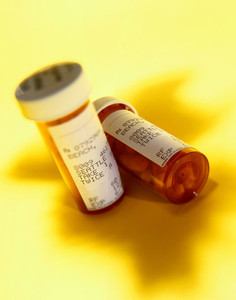The costs of health care are rising across Europe through ageing populations resulting in more patients with chronic diseases, stricter clinical targets for managing patients with long term (chronic) diseases, the continued launch of new and more expensive drugs as well as rising patient expectations.
Once the patent for an originator medicine expires, generic medicines can enter the market. Generic medicines have the same quality, safety and therapeutic efficacy as the originator medicine, but are less expensive than originator medicines. Use of generics allows European governments to continue to provide comprehensive and equitable health care without prohibitive increases in either taxes or health insurance premiums.
Many generic drugs are nowadays being prescribed to patients and the trend is increasing. In many countries pharmacists are also encouraged to substitute brand-name drugs with cheaper generics, for cost-saving purposes. In fact, many countries across Europe have introduced a number of measures in recent years to increase the prescribing and dispensing of generics, with countries continuing to learn from each other as cost pressures continue growing.
Research shows, however, that many patients get confused or feel apprehensive about having their drugs changed and report negative experiences such as poorer effect or more side effects. As a consequence, patients may use their drugs inappropriately or even end up not taking their drugs at all.
More information directed at patients and increased involvement of physicians are needed to ensure that patients are aware that although the drugs may differ by name, shape, colour, and taste they are equal in respect of effect as well as quality and safety.
In fact, generic drugs are well-tested, high quality medicinal products. They are strictly regulated by the National and European Competent Authorities and they are only granted approval by going through an extensive authorisation process. This process ensures adequate safety and efficacy of generic medicines available on the European market.
In an era of ageing populations and rising healthcare costs, generic medicines allow patients to access safe, effective, high quality medicines at 20–80% of the price of branded originator medicines.
Matrix model prescribing
Use of generic drugs instead of patented drugs can save major amounts of money. However, many physicians do not consider cost an important selection criterion. To try to address this problem interactive matrix models to promote rational drug selection within a drug class, based on criteria such as efficacy, safety, tolerability, dosage frequency, drug interactions, documentation and cost, can be used. When all these criteria are taken into consideration and weighted, generic drugs are very interesting alternatives to much more expensive patented drugs.
Use of generics in children
For many years little was done to test medicines given to children. Some laws in the US and now in Europe have helped to change this for new drugs being developed or still protected by patents.
However, there is little or no incentive for industry to test or develop generic versions of some old, yet very important, drugs used in children or for very rare diseases. Governments, patients/parents, academic institutions, and the pharmaceutical industry share responsibility to find a way to develop and adequately test medications to be used in children as well as other non-profitable patient groups.
Readers interested to learn more of the Acts for children pharmaceutical research in the US are invited to view the following peer reviewed article published in 2012, Issue 2, in GaBI Journal:
Equal protection under the law: Children and the Best Pharmaceuticals for Children Act
Editor’s comment
If you would like to receive a copy of research articles from GaBI Journal containing further information on the subjects discussed above please send us an email.
If you are interested in contributing an article on patient’s perspective on generics and biosimilars to GaBI Journal, please send us your submission here.








 0
0











Post your comment